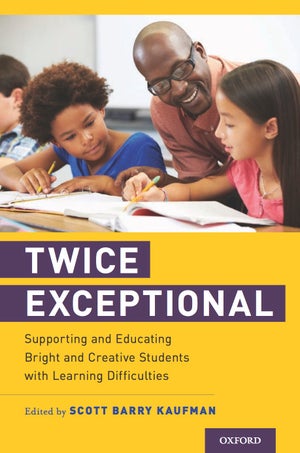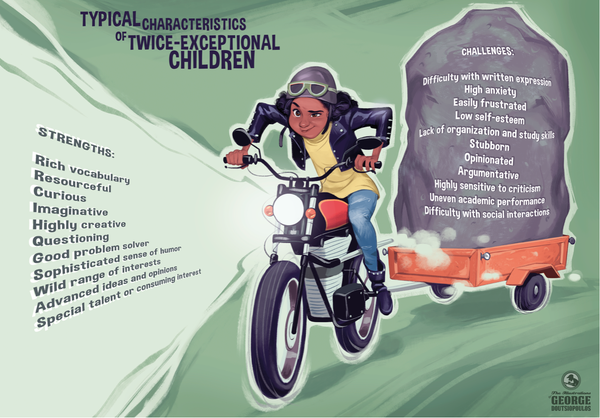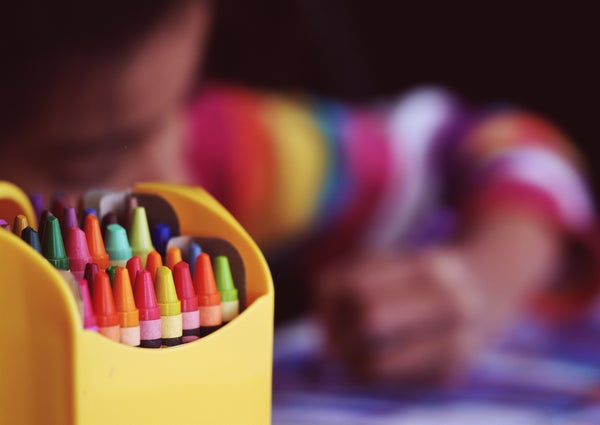This article was published in Scientific American’s former blog network and reflects the views of the author, not necessarily those of Scientific American
One school fixed its attention upon the importance of the subject-matter of the curriculum as compared with the contents of the child’s own experience. Not so, says the other school. The child is the starting point, the center, and the end. [Their] development, [their] growth, is the ideal. Not knowledge, but self-realization is the goal.
—John Dewey (1902)
Mark is an inquisitive 13-year-old African American boy with a sarcastic wit, keen observation skills, and an extraordinary ability to draw life-like renditions of birds, including albatross, petrels, and penguins. He is able to recreate, in exquisite detail, the large wingspan of the albatross as it cuts through the air and the flippers of the penguin as it wades its way through ice. The highlight of his young life so far was a trip to SeaWorld Orlando when he was 11, where he was able to see the South Pole through the eyes of a penguin. As if that wasn’t exciting enough for Mark, he was able to go on the Penguins Up-Close tour afterward, and even touch a penguin! It was all he was able to speak about for months, and even today he still dreams of returning someday.
Mark also has high-functioning autism. Diagnosed around the age of seven, you can clearly see some common characteristics of autism if you are actively looking for them. For instance, his language development was delayed, he does not naturally maintain eye contact when someone else is speaking to him, he likes order and repetition, and he has tantrums if there is too much stimulation happening in the environment that he cannot control. To the great pain of Mark and his family, he is bullied quite frequently. While he doesn’t get nearly as much time as he would desire to work on his paintings, in a few instances where he was able to work on them during recess, a few bullies teamed up and ripped them up, teasing him and calling him a “retard.” During school, Mark’s self-esteem is low, and his anxiety levels are high. At home, however, when he is working on his paintings in the quiet of his studio (which his parents set up for him), he feels confident, in control, and even normal.
On supporting science journalism
If you're enjoying this article, consider supporting our award-winning journalism by subscribing. By purchasing a subscription you are helping to ensure the future of impactful stories about the discoveries and ideas shaping our world today.
This vignette, which can only give the slightest portrait of a child, illustrates the joys, frustrations, and promises of children who simultaneously have extraordinary potentialities coupled with extraordinary disability. To many, this may seem like a contradiction in terms. How can someone be both exceptionally abled and exceptionally disabled at the same time? But therein lies the problem: society’s inability to even imagine such a paradox has contributed to many children not receiving the support required for them to truly flourish.
In recent years, this complex problem has been labeled "twice exceptional," (2e) but it is still a relatively unknown concept in education (compared to either gifted and talented education or special education). This is due in large part to the history of the field, in which both gifted and talented education and special education developed essentially in isolation of each other, further reinforcing the artificial mutual exclusiveness of these two forms of support. For 2e children, who have extraordinary strengths coupled with learning difficulties, the problem is compounded by the paradoxical nature of their intellect and an unbending system, ill-equipped to cater to their unique learning needs.
To shed further light on this growing movement, and offer further resources for supporting these students, I recently put together a volume that brings together the leaders in this relatively new field. Now available for purchase, Twice Exceptional: Supporting and Educating Bright and Creative Students with Learning Difficulties provides cutting-edge, evidence-based approaches to creating an environment where twice-exceptional students can thrive. Viewing the 2e student as neither exclusively disabled nor exclusively gifted, but, rather, as a dynamic interaction of both, leading experts offer holistic insight into identification, social-emotional development, advocacy, and support for 2e students. With chapters focusing on special populations (including autism, dyslexia, and ADHD) as well as the intersection of race and 2e, this book highlights practical recommendations for school and social contexts. In expounding the unique challenges faced by the 2e population,Twice Exceptional makes a case for greater flexibility in our approach to education and a wider notion of what it means to be "academically successful".

Credit: Oxford University Press
As a kid growing up with my own auditory learning difficulties (first central auditory processing disorder and then high anxiety), I remember vividly (and painfully) what it was like to grow up with a dual identity. On the one hand, I felt as though something was very wrong with me, as though I was broken. On the other hand, I was yearning deep inside for more intellectual and creative challenges and felt capable of something more. But who was I to challenge the authorities? These conflicting identities led to a lot of confusion and an unstable sense of self as a child. Thankfully, I had a special education teacher who saw beyond my label to some hidden strengths that were bursting to come out from deep within me. She inspired me to sign up for more challenging classes and after-school activities (e.g., school orchestra, choir, musicals, etc.), which allowed me to finally put my ravenous curiosity and desire to take on creative projects to good use. Eventually, through a lot hard work as well as a love of learning, I worked my way up to a Yale PhD in cognitive psychology, where I was able to propose a new definition of intelligence. But I will never forget where I came from, and what it was like to grow up 2e. It may only be a sample size of one, but I personally know what is possible with even a little encouragement and support, and I truly hope this book can help many more children become what they are capable of becoming.
DEFINITION OF 2E FOR THIS BOOK
Which children fall within the purview of 2e? Some estimates say there are about 300,000 twice exceptional students in the United States. However, I think this is a gross underestimate once we consider all of the varied ways a child can have serious learning challenges coupled with extraordinary strengths.

Credit: George Doutsiopoulos
In the book I presented a modified version of a definition that reached consensus among 26 organizations that support the research and educational needs of 2e students (Baldwin et al., 2015):
Twice-exceptional individuals demonstrate exceptional levels of capacity, competence, commitment, or creativity in one or more domains coupled with one or more learning difficulties. This combination of exceptionalities results in a unique set of circumstances. Their exceptional potentialities may dominate, hiding their disability; their disability may dominate, hiding their exceptional potentialities; each may mask the other so that neither is recognized or addressed.
2e students, who may perform below, at, or above grade level, require the following:
Specialized methods of identification that consider the possible interaction of the exceptionalities.
Enriched/advanced educational opportunities that focus on developing the child’s interests and highest strengths while also meeting the child’s learning needs.
Simultaneous supports that ensure the child’s academic success and social-emotional well-being, such as accommodations, therapeutic interventions, and specialized instruction.
Working successfully with this unique population requires specialized academic training and ongoing professional development. Critically, these behaviors occur in certain people, at certain times, and under certain circumstances, especially when the environment is supportive (e.g. high expectations) and in environments that challenge them appropriately in the area(s) of their highest potentiality.
One change I made to the original definition is the inclusion of capacity, competence, commitment, or creativity as potential manifestations of ability. I believe each of these can be mixed and matched in nuanced, unique ways. For instance, it is possible that the 2e student does not demonstrate their highest potentiality through formal standardized tests or school grades but demonstrates an exceptional aptitude for reasoning and soaking up knowledge in the classroom (something that can be observed by teachers). Or perhaps the 2e student is a poor test taker but is extraordinarily committed, passionate, and curious about learning more about a domain. Or perhaps the 2e child shows an intense interest in creating something, or doing a project relating to a domain. Or perhaps the 2e child is high achieving on tests but does not appear to be a fast learner in the classroom. There are, of course, many more possible combinations of these four strengths among 2e students.
Here is a recent TEDx talk in which I discuss these "Four C's":
I believe this definition of 2e is broad enough to capture most of the 2e population while being narrow enough to distinguish among (a) 2e children, (b) children who are in gifted and talented education but who do not demonstrate a disability, and (c) children with a disability who do not require gifted and talented programming at a given time.
With that said, I dream of a day in which every single student receives his or her own individualized educational plan and is challenged appropriately and supported at every step of the way. Indeed, my theory of Personal Intelligence (Kaufman, 2013) argues for a shift from an educational model that compares children to each other on a single dimension (e.g., IQ, academic performance) to an appreciation of the whole child, which includes a unique pattern of strengths and weaknesses, but also recognizes the importance of ability, engagement, and personal goals working together and changing over time. Only by supporting the whole child, and supporting their own unique personal goals, hopes, and dreams, will they become fully engaged in their future.
Unfortunately, we currently live in a world in which labels are often necessary to help students receive the resources they require to thrive. Living with that reality, I hope this book is a good start toward increasing awareness and support of a long-neglected population of students: the twice exceptional.
Table of Contents
PART- Identification
Finding and Serving Twice Exceptional Students: Using Triaged Comprehensive Assessment and Protections of the Law - Bobbie Gilman and Dan Peters
Using a Positive Lens: Engaging Twice Exceptional Learners - Susan Baum and Robin Schader
Finding Hidden Potential: Toward Best Practices in Identifying Gifted Students with Disabilities - Edward R. Amend
Misconceptions about Giftedness and the Diagnosis of ADHD and Other Mental Health Disorders - Deirdre V. Lovecky
Knowns and Unknowns about Students with Disabilities Who Also Happen to Be Intellectually Gifted - Steven I. Pfeiffer and Megan Foley Nicpon
PART II Supporting Twice Exceptional Students
How We Can Recognize and Teach Twice- or Multi-Exceptional Students - Susan Winebrenner
Twice Exceptionality and Social-Emotional Development: One Label, Many Facets - Judy Galbraith
Advocating for Twice Exceptional Students - Rich Weinfeld
It Takes a Team: Growing Up - Mary Ruth Coleman, Lois Baldwin, and Daphne Pereles
Educating the Twice Exceptional Child: Creating Strong School-to-Home Collaborative Partnerships - Kevin Besnoy
PART III Special Populations
Attention Divergent Hyperactive Giftedness: Taking the Deficiency and Disorder out of the Gifted/ADHD Label - C. Matthew Fugate
Appreciating and Promoting Social Creativity in Youth with Asperger’s Syndrome - Matthew D. Lerner and Rebecca M. Girard
The Spectrum of Twice Exceptional and Autistic Learners and Suggestions for their Learning Styles - Richard O. Williams and Jeffrey Freed
Visuo-Spatial Skills in Atypical Readers: Myths, Research and Potential - Maryam Trebeau Crogman, Jeffrey Gilger, and Fumiko Hoeft
Gifted Dyslexics: MIND-Strengths, Visual inking, and Creativity - Susan Daniels and Michelle Freeman
Being 3e, A New Look at Culturally Diverse Gifted Learners with Exceptional Conditions: An Examination of the Issues and Solutions for Educators and Families - Joy Lawson Davis and Shawn Anthony Robinson
Where the Rubber Meets the Road: Supporting the Educational Success of Twice Exceptional African American Students - Renae D. Mayes, Erik M. Hines, and James L. Moore III
PART IV Models
18. Bridges Academy: A Strengths-Based Model for 2e - Carl Sabatino and Chris Wiebe
19. Integration and Dynamic Adaptation in the Formation of a Novel 2e School Model - Kimberly Busi and Kristin Berman
This article was adapted from the Preface to the book Twice Exceptional: Supporting and Educating Bright and Creative Students with Learning Difficulties
